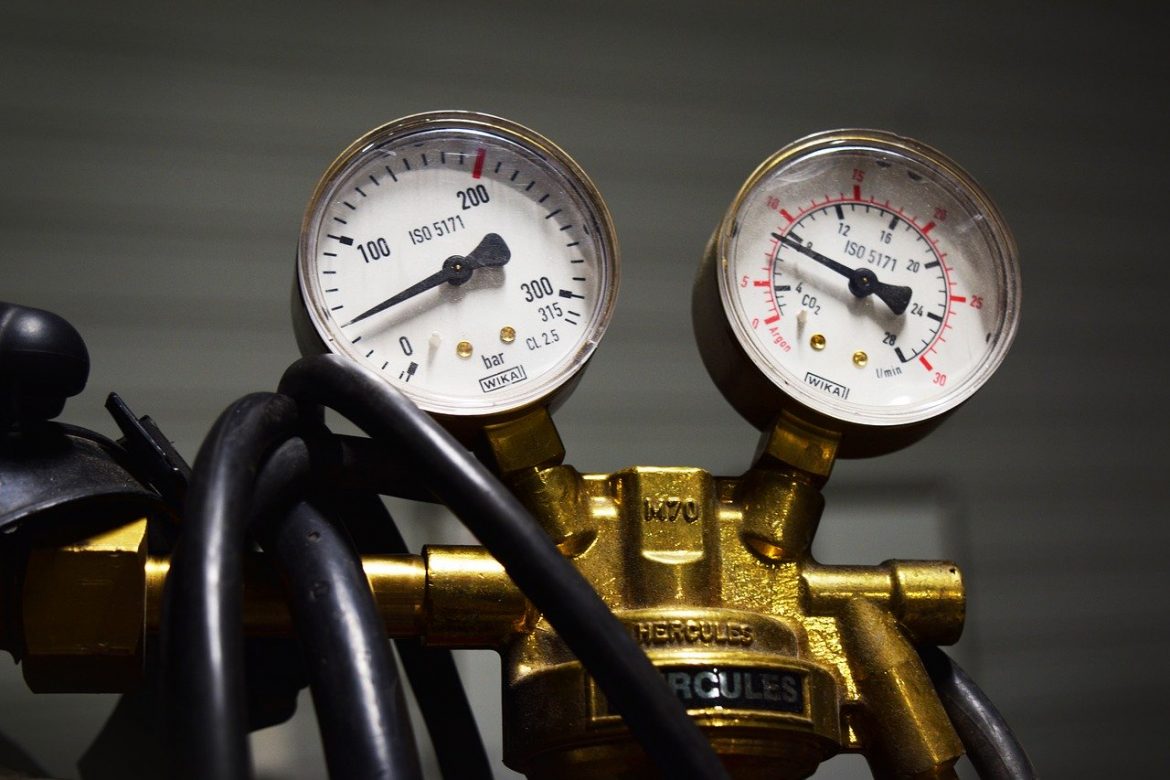Instalacja gazu ziemnego w Polsce stanowi bardzo częsty wybór zarówno wśród mieszkańców bloków, jak i domów jednorodzinnych. Ogrzewanie ciepłej wody użytkowej za pomocą gazu ziemnego oraz korzystanie z instalacji gazowej do ogrzewania potraw najczęściej spotyka się w blokach i kamienicach, ale również w domach jednorodzinnych można korzystać z tego rozwiązania.
Gaz ziemny w domu jednorodzinnym – najważniejsze informacje
Gaz to jedno z tzw. konwencjonalnych paliw energetycznych. W przypadku domów jednorodzinnych istnieje możliwość wykorzystania gazu do ogrzewania budynku, wytwarzania ciepłej wody użytkowej oraz do ogrzewania posiłków w kuchenkach. Grzewcza instalacja gazowa może przybierać dwie formy, które wynikają z postaci skupienia dostarczanego gazu:
- LPG (gaz płynny) – jest magazynowany w specjalnym zbiorniku, który jest zazwyczaj umieszczony na zewnątrz budynku,
- gaz ziemny – korzystanie z tego rodzaju paliwa jest możliwe tylko i wyłącznie w przypadku, gdy do budynku doprowadzono sieć instalacji gazu ziemnego.
My zajmujemy się tym drugim rodzajem instalacji gazowej w domach jednorodzinnych. Instalacja gazu ziemnego w domu jednorodzinnym to układ przewodów oraz urządzeń, które prowadzone są zarówno na zewnątrz, jak i wewnątrz domu. Na instalację na gaz ziemny w każdym domu jednorodzinnym składają się takie elementy jak:
- przyłącze poprowadzone od gazociągu,
- kurek główny,
- szafka gazowa z gazomierzem,
- pion,
- przewody użytkowe, które skierowane są do urządzeń gazowych.
Instalacja gazowa służy do zasilania domowych odbiorników gazu, którymi najczęściej są:
- kocioł gazowy (centralnego ogrzewania, może dodatkowo pełnić funkcję przygotowania ciepłej wody użytkowej),
- podgrzewacz ciepłej wody użytkowej (tzw. piecyk gazowy),
- kuchnia gazowa,
- kominek gazowy.
Instalacja gazu ziemnego – jakie są wymagania prawne?
Aby móc wykonać wewnętrzną instalację gazową gazu ziemnego (czyli od szafki gazowej) konieczne jest pozwolenie na budowę. Nie dotyczy to domów, które plan przyłącza gazowego zawierają w pozwoleniu na budowę domu. Miejscem początkowym instalacji gazu ziemnego jest połączenie z głównym kurkiem (służącym do odcinania instalacji od przyłącza). Jako zakończenie instalacji gazowej definiowane są konkretne urządzenia gazowe.
Aby otrzymać pozwolenie na przyłącze do sieci gazowej, należy z tym zwrócić się do dostawcy gazu. Następnym krokiem jest złożenie wniosku. Zakłady gazowe mają formularze dostępne na miejscu lub na stronie internetowej. Należy określić warunki przyłączenia. W przypadku domów jednorodzinnych składa się wniosek o określenie warunków przyłączenia dla podmiotu, który ubiega się o przyłączenie do sieci gazowej, przewidującego odbiór paliwa gazowego w ilości nie większej niż 10 m3/h (w przeliczeniu na gaz ziemny, wysokometanowy). Do wniosku należy także dołączyć mapę do celów informacyjnych (w skali 1:500 lub 1:1000 z zaznaczoną lokalizacją szafki gazowej). Potrzebne będą także kopia dokumentu potwierdzającego tytuł prawny do korzystania z budynku wraz z oświadczeniem o prawie własności. W przypadku, gdy jesteśmy współwłaścicielami, należy także dołączyć zgodę właścicieli lub współwłaścicieli. Zgoda dotyczy doprowadzenia gazu do budynku i na zainstalowanie w nim urządzeń gazowych.
Następnym etapem jest złożenie wniosku o zawarcie umowy o przyłączenie do sieci gazowej. Ostatni etap to przygotowanie projektu przyłącza gazowego wraz ze złożeniem zgłoszenia budowlanego do odpowiedniego organu, np. starostwa powiatowego.
Domowa instalacja gazu ziemnego – bezpieczeństwo
Dla każdej domowej instalacji gazu ziemnego bardzo ważne jest bezpieczeństwo. W związku z tym należy zadbać o odpowiednią wentylację pomieszczeń, wykonywać częste przeglądy sieci oraz inwestować w sprzęt najwyższej jakości. Do domowych instalacji gazowych sprawdzą się takie produkty jak gazomierze (np. gazomierz miechowy BK G16, gazomierz miechowy G6, gazomierz G10), skrzynki gazowe (np. skrzynka gazowa podwójna stojąca pozioma 1000x700x250 z daszkiem popiel, skrzynka gazowa 600 x 600 x 250 mm wolnostojąca metalowa stylowa miedź antyczna), a także zasuwa do gazu DN 32 z końcówkami PE40 PN10.
Instalacja gazowa na gaz ziemny to tani, praktyczny i łatwy w obsłudze sposób na ogrzewanie domu jednorodzinnym. Blisko domu musi jednak przebiegać sieć gazu ziemnego i należy dopełnić wszelkich formalności.
